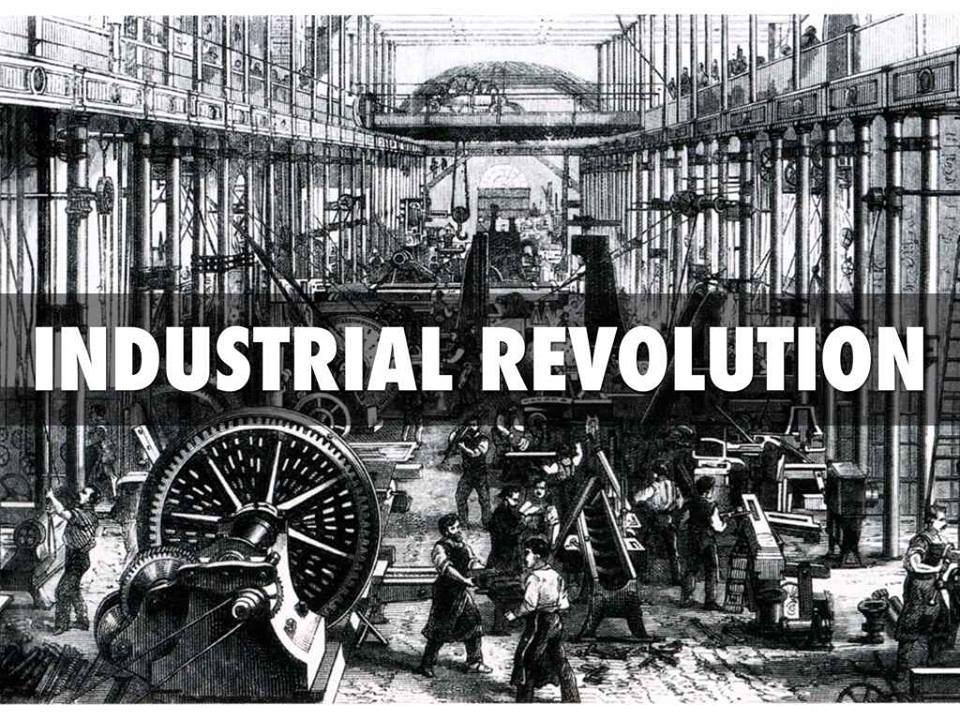Industrialization marked a shift to powered, special-purpose machinery, factories and mass production.
While industrialization brought about an increased volume and variety of manufactured goods and an improved standard of living for some, it also resulted in often grim employment and living conditions for the poor and working classes. The Industrial Revolution, which took place from the 18th to 19th centuries, was a period during which predominantly agrarian, rural societies in Europe and America became industrial and urban. A number of factors contributed to Britain’s role as the birthplace of the Industrial Revolution. Britain was a politically stable society, as well as the world’s leading colonial power, which meant its colonies could serve as a source for raw materials, as well as a marketplace for manufactured goods.
The most important of the changes that brought about the Industrial Revolution were (1) the invention of machines to do the work of hand tools; (2) the use of steam, and later of other kinds of power, in place of the muscles of human beings and of animals; and (3) the adoption of the factory system.
Innovating the Innovation: Developments in the iron industry also played a central role in the Industrial Revolution. In the early 18th century, Englishman Abraham Darby (1678-1717) discovered a cheaper, easier method to produce cast iron, using a coke-fueled (as opposed to charcoal-fired) furnace. Both iron and steel became essential materials, used to make everything from appliances, tools and machines, to ships, buildings and infrastructure.The textile industry, was transformed by industrialization. Before mechanization and factories, textiles were made mainly in people’s homes (giving rise to the term cottage industry), with merchants often providing the raw materials and basic equipment, and then picking up the finished product.
The steam engine was also integral to industrialization. In 1712, Englishman Thomas Newcomen (1664-1729) developed the first practical steam engine (which was used primarily to pump water out of mines). By the 1770s, Scottish inventor James Watt (1736-1819) had improved on Newcomen’s work, and the steam engine went on to power machinery, locomotives and ships during the Industrial Revolution.Communication became easier during the Industrial Revolution. William Cooke (1806-1879) and Charles Wheatstone (1802-1875), patented the first commercial electrical telegraph in 1837. The Industrial Revolution also saw the rise of banks and industrial financiers, as well as a factory system dependent on owners and managers. A stock exchange was established in London in the 1770s.
Problems: Capital and Labor
The capitalists had a struggle to obtain a voice in the government. They needed a better system of banking, currency, and credit. They had to find and hold markets for their products. They had many difficulties in organizing their factories to run efficiently. They also had to make a profit on their investments in the face of intense competition. Those who were successful made huge profits with which to buy more machines, put up larger buildings, and purchase supplies in greater quantities at enormous savings. Thus capital increased far more rapidly than it ever had before. Much of it was invested in building canals, railroads, and steamships and in developing foreign trade. The men who controlled these enterprises formed a powerful new class in England–the industrial capitalists. Laissez-faire was the rule in England. This meant that the government had accepted the doctrine that it should keep hands off business. Factory owners could therefore arrange working conditions in whatever way they pleased. Grave problems arose for the workers–problems of working hours, wages, unemployment, accidents, employment of women and children, and housing conditions. Industrial workers also sought to benefit themselves by political action. They fought such legislation as the English laws of 1799 and 1800 forbidding labor organizations. They campaigned to secure laws which would help them. The struggle by workers to win the right to vote and to extend their political power was one of the major factors in the spread of democracy during the 19th century.
Spreading of the Revolution: The United States too was slow in adopting machine methods of manufacture. Farming and trading were its chief interests until the Civil War. The new nation had little capital with which to buy the machinery and put up the buildings required. Such capital as existed was largely invested in shipping and commerce. Labor was scarce because men continued to push westward, clearing the forests and establishing themselves on the land. The Second Industrial Revolution marked great progress in the methods of mass production. More and more industries used interchangeable parts and machine tools. Electric power replaced steam power in factories; it was cheaper, faster, and more flexible. It allowed machine tools to be arranged more efficiently. Human power was replaced by machine power. In 1913 Henry Ford introduced the assembly line in the manufacture of his Model T Ford. Parts were assembled on a moving conveyor belt, and the Model T took shape as it moved from one work station to the next.
The assembly line greatly increased the speed of manufacture and soon was used in many industries. By the outbreak of World War I in 1914, only a small number of industries in the most industrialized nations of the world had adopted advanced production methods and organization. Only Great Britain, the United States, Germany, France, and some parts of the Scandinavian countries had successfully completed an industrial revolution.



